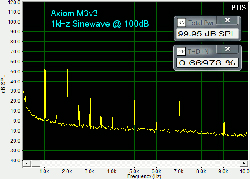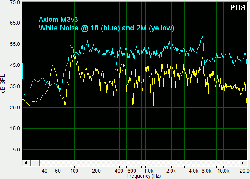Bookshelf speakers – a loved and hated niche in the audio industry. A step up from cubes or soundbars for certain. But to the purist they are a “unacceptable” compromise vs. floor standers for primary listening. Be that as it may – they still provide massive sales volumes in the industry and often benefit greatly from technology trickledown from a manufacturer’s reference level systems. Since most of our music is produced on “bookshelf” sized monitors – why shouldn’t bookshelf speakers receive just a little more respect? Well, here are two that deserve respect: Axiom M3 v3 (version 3 of the M3).
Specifications
- Design: 2-way, Ported
- Drivers:One 1″ Titanium Dome Tweeter, One 6.5″ Aluminum Cone Mid/Bass
- MFR: 60 Hz – 20 kHz ± 3 dB
- Nominal Impedance: 8 Ohms
- Crossover Frequency: 2.2 kHz
- Sensitivity: 88 dB/W/M
- Recommended Amplifier Power: 10-175 Watts
- Dimensions: 13.5″ H x 8.5″ W x 8.25″ D
- Weight: 12.7 Pounds/each
- Finish: Black Oak, Boston Cherry, Optional Other Finishes
- MSRP: $348/pair USA (An Outdoor Version is Also Available)
- Axiom Audio
Fellow Secrets reviewer Chris Eberle recently covered a full 5.1 system from Axiom and also conducted a short interview with Axiom’s President and founder Ian Colquhoun so I won’t repeat too much of the background info, you can read the review and interview here. To summarize, Axiom is an online vendor that has been around for more than 30 years, and like many other notable Canadian manufacturers, has participated in, benefited from, and been inspired by the work performed at the National Research Council (NRC) anechoic chamber. In fact – Axiom liked the NRC chamber so much they built one of their very own.
Design
The Axiom M3 has been part of Axiom’s lineup since 1997 and this second re-design (hence the “v3” for version 3) was launched last year as part of a line wide upgrade program. Cosmetically Axiom changed the woofer dust cover and added magnetic grills. In the “guts” department minor details like the cross over, tweeter and woofer were re-designed as well. Historically the M3 had a somewhat unusual crossover in that the midrange-woofer driver didn’t. Huh???? Simple, the woofer rolled off naturally and the crossover was used solely for the tweeter.
I confirmed with Axiom’s Alan Lofft that this is still the case in the M3v3 and when I added a question about the 2.2 kHz crossover point being lower than some similar sized speakers Alan passed on a quote from Ian – that 2.2 kHz “is a comfortable crossover point, on the low side of the comfort zone for off-axis performance reasons given the size of the M3’s woofer.” There’s that NRC philosophy again – designing a speaker that sounds good and performs well both on and off axis.
With a 1″ dome titanium tweeter and 6.5″ aluminum cone woofer the M3 is the middle speaker in the bookshelf line for Axiom with the M2 and its 5.25″ woofer being a couple inches shorter and the M22 straining the definition of “bookshelf” with an additional 6″ of height (19.8″) and utilizing two 5.25″ woofers. To spread the love around even further variations on the M3 are also available as: an on wall, an in wall or a mixed “on/in” wall version (with depths of 3.6″ 0.4″, 3.6″ respectively). As you may expect the flat “on wall” version gives up some bass and sensitivity while the “in wall” and the “on/in wall” with their larger volume enclosures provide enough enclosure volume to return some bass extension. Interesting variations on a theme.
Axiom offers two basic finishes for the M3: Black Oak or Boston Cherry, both with black magnetically attached grilles (a v3 upgrade). However there are also a further 14 vinyl finishes, 6 real wood options (each with 6 stain options AND 3 gloss levels (semi, satin or high gloss “piano” finish) and 2 solid color high gloss (Black or White) to choose from. Not enough? You get your choice of 6 different grille colors. Still not enough? Axiom also offers a custom color matching service where you send them a sample, they match it and send a sample back for your approval. Wow, I have enough trouble finding two matching socks on in the morning.
My sample was finished in “Vermont Maple” from the custom vinyl range. Look and feel were good for vinyl and the seams are well done although there were a few points where a minute gap (only visible under intense scrutiny) was present. The change to magnetic grills leaves the 4 hex head speaker mounting bolts on the tweeter and the woofer as the only items (other than a small portion of the woofer surround) that extend beyond the finished front baffle. They look fine straight on but at an angle they protrude slightly and a countersunk bolt would clean up the look of the front face that much further.
The unit is rear ported with Axiom’s “vortex port” which is a crimped sort of design to reduce port noise via an increase in the port sidewall surface areas. The port is approx. 5.5″ deep and 2″ wide and reveals a generous fibre fill stuffing inside the enclosure. Feeling clever, I had estimated that the port’s frequency was about 60Hz which is in line with the low end of the speaker’s frequency response range. This was before I saw the impedance vs. frequency graph on the last page of the axiom manual. Guess that one is confirmed! (link) Since it is a rear port you’ll need to leave some room for the speaker to breathe if you do actually “bookshelf” them although the manual states you can get away with a minimum of 2″ clearance.
Finally, the M3 also comes with a bolt on the rear that connects it to Axiom’s “Full Metal Bracket” for wall mounting. Sigh… Wouldn’t want to violate the rules of speaker warfare with a hollow point bracket now would we?
Setup
I’ll dispense with my usual penchant for lengthy descriptions of the packaging and un-boxing process and simply state my test units arrived unharmed and in good condition. Since Axiom ships every unit directly to a customer with a 30 day satisfaction guarantee you’ve got to figure they’ve got this part down pat by now. I will say the manual is more complete than usual and thankfully dispenses with the trend towards multi-language ikea-esque info-diagrammatics. The manual covers placement, speaker components, cabling, connection to the amp and detailed connection info for bare wire, spades or banana plugs. This is a nice touch for the newbie as is the included mini wrench for tightening the down the binding posts.
With a single pair of five-way binding posts for each speaker there is no bi-wire / bi-amping option available. The speaker rests on 4 small rubber feet although a 16″ or 24″ stand (full metal stand….) is also available. I would advise slightly larger pads for these speakers if placing them on a shelf or tabletop to cut down on any transmitted vibrations and to protect both surfaces. Setting them up at ear level and playing around with various toe in angles I found they were most comfortable for me with a mid level (call it about 10 degrees) of toe in for stereo and with no toe in for home theatre.
The speakers were connected to a via 10 gauge Belden 5T00UP cables to my Anthem amp and all source material was driven by an OPPO BDP-93 or via balanced connections from my HTPC sound card. All listening was done in a “direct stereo” mode with the receiver’s equalization and sound processing turned off or directly from the HTPC via the amp.
In Use
Since the M3’s are a very similar size and weight as my veteran KEF Q1’s currently deployed as my rear channels I decided to use them for a direct comparison for some stereo listening. Both boxes are ported, have a 6.5″ driver, a metal dome tweeter (1″ vs 0.75″) and a cabinet shape that narrows towards the rear with the goal of reducing internal standing waves.
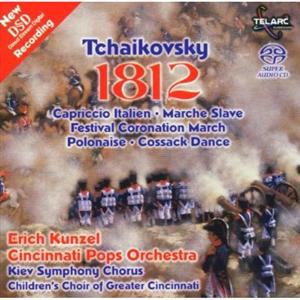
Since this review is another Canadian company for me, using Tchaikovsky’s 1812 Overture seems somehow appropriate in a metaphorical sort of way. The Telarc recording is normally used as a test piece for subs but it works for total dynamic range as well. Even if the performance itself isn’t the best example available there are some choir pieces and the usual symphonic mix of strings and brass within the composition that will even work for testing a bookshelf. I found the differentiation and separation of the choir from the orchestra was clearer and more present and with better definition on the M3s. Cymbals ended up sounding cleaner but slightly tinny and the French horns had much more balance and presence on the M3.
On the portions of the composition with prominent representation from the string section the KEFs were more muddied on the higher stings. The cannon shot and timpani were less prominent on the M3s which I ascribed partially due to the range of the M3 speaker but also due to the slightly boomy bass from the KEFs which leaves the M3 sounding more neutral. Going through other music styles trying to narrow down the bass differences I found that it was only in the upper bass that the KEF dominated with their more forward bass presentation and higher efficiency providing the impression of heavier bass. In really bass heavy electronic music the M3 surprised me as the better balanced speaker across the bass range.
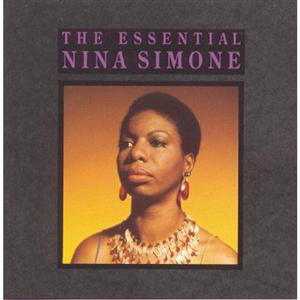
I was looking for a way to better differentiate the midrange performance between the speakers and ended up with Nina Simone. She really highlighted the differing performance in the midrange between the speakers. The Axiom had already shown itself to be much flatter and this is even more obvious in the midrange where the KEFs feel hollow and so laid back the sound stage starts collapsing – distracting the listener from the performance. At the same time the M3s evidenced a more spacious and airy sound in the treble range. I tend to associate some harshness with a more airy presentation but in this case the opposite was true, the M3’s were smooth smooth smooth.
Overall the effect was one of a different presentation entirely. With the KEFs, I was listening to recording of a live performance. With the M3s, I was listening to a live performance – as a member of the audience.
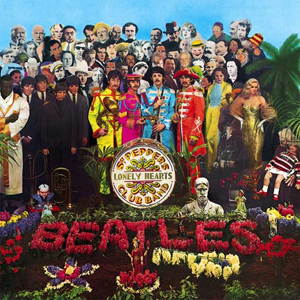
Not necessarily their best album, nonetheless Sgt. Pepper‘s simplicity and production techniques can be revealing on its own, more so when listening to the new(ish) re-release in mono. (Take that 9.1 surround!) That and this album was probably my first “proper” transfer of an LP to cassette so I listened to it over and over and over.
On “Being for the benefit of Mr Kite!” the bass guitar combined with the organ tones were less prominent but also less distinct on the M3s. One thing that surprised me a little was the dynamic range of the speaker. I know they are rated to 175W but from such a “small” speaker you don’t really expect them to be able to rock at potentially hearing damaging levels without breaking up. But they can. Huh! I cranked up Good Morning and there it was: cheap distortion, limited arrangement, apathetic band members, barnyard animals – the whole works!

While some folks will undoubtedly use the M3’s as mains for a dedicated home theatre for me they really came into their element more in our secondary system upstairs for casual music listening. That being said, using the M3 speakers to stand in for my towers was an interesting experiment. Not because they didn’t suffice, (I upped the crossover to 80 Hz in my receiver to give them some breathing room) as they were surprisingly good in this role but because I was never really happy with the timbre matching during sound pans from center to left or right even after forcing some parameters on the receiver room EQ.
Without room EQ (but with level matching), there was an obvious and distinct transition to and from the center channel. For example: in the big dog pack / chase scene toward the end of the movie “Up” it sounded like a there was a whole second pack of dogs coming to join the party. With room Eq. on and forcing the rest of the speakers to match themselves to the M3s everything started sounding too compressed while still never fooling the ear into believing there was a seamless transition. Just goes to show if you really want seamless sound in your surround – get matched speakers and save the heroic Eq. efforts for your room.
On the Bench
Measurements were taken from 1 foot away at a height equal to the center of the driver or at the midpoint of the drivers for full range tests with the speaker at least 4 feet away from the nearest wall.
THD+N measured 0.67% at 1 kHz and the 3rd harmonic was the largest at 46 dB below the primary. There were some interesting residual harmonics at 2.5 kHz and 3.5 kHz, but the loudest was still 75 dB below the primary.
THD+N measured 0.68% at 10 kHz and the first harmonic (albeit inaudible to anyone over the age of 1 month), was 45dB below the primary.
Going to the speaker’s low end we usually measure @ 50Hz but I got a max of 97.6dB at 50Hz before I hit 10% THD+N. Since 50Hz is below the speaker’s published +/- 3db frequency response lower range of 60Hz, I retested at 60Hz where I managed 100dB with 5.8% THD+N. Not bad for a bookshelf! The fact that the M# uses a fairly “large” 6.5″ driver here really helps, you’ll definitely hear the bass full range or to be blown out of your seat you will need a sub.
Just for fun (okay I forgot to move the mic) you can see the in-room response at 2m vs. the response from 1ft away in the graph above. Some of the same characteristics show up at 2m as they do at 1ft but you can see (yet again – if you needed further convincing that is) that your room can be as much a factor in how your speakers sound as the speakers themselves. I got some nice in room peaks at 50 Hz and 100 Hz with a corresponding valley @ 75 Hz in the 2m test that were not present in the 1ft. An 80 Hz crossover to the subwoofer would be fine for these speakers which is great for bookshelf speakers. Often in this size speaker you can end of crossing over at 120 Hz or even higher and the directionality of your subwoofer bass is getting compromised at that point.
Conclusions
I am beginning to hope my next review is an obscure and really wacky sounding set of speakers with a lot of “character” as this extended exposure to Canadian manufacturers is beginning to make me doubt my aural sanity. Clean, neutral, low coloration, great dynamics, and in the case of the M3 a truly “natural” and realistic midrange that’s the next best thing to being there. At $350 for the pair you are getting some serious value for your bookshelf. With a sub these speakers will even work well as primary speakers for HT use – they have the legs to handle it. You are also getting a product backed up by a process of measurement and continuous evolution as well as a level of dedication to perfecting a that works in the lab and translates to the real world.
So if you are looking for a set of speakers to tame a bright amp or brighten a overly warm one you’ll need to get used to the characteristics you bought into with your amp purchase or look elsewhere. These speakers are not going to noticeably compensate for the incidental inline EQ you’ve added to your system.
All in all it’s really too bad that Chris has sent his Axiom full tower 5.1 system back already, I would have loved to have heard a full system and would have volunteered to take a listen “on their way home” as it were. I could have then arranged to drop them off back at Axiom myself. Say, maybe around late summer when the weather is a little nicer and the lakes around Axiom’s cottage country head office are a little warmer.





